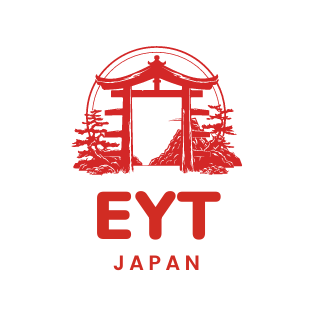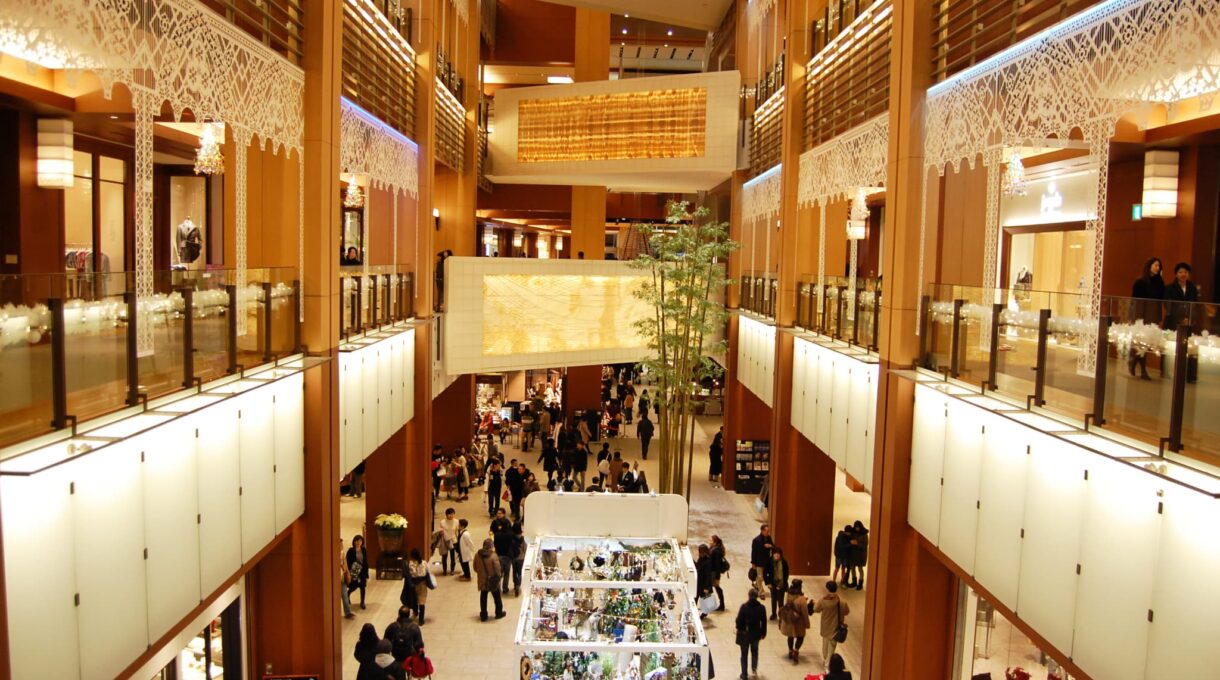In Japan, there are many places where shopping can be enjoyable. When traveling abroad, shopping malls are often places many people visit, aren’t they?
If you’ve been to Bangkok, Thailand, you’ll understand. Bangkok’s shopping malls are incredibly large and filled with luxury brands and local shops. Just walking around is enjoyable!
Japan also has shopping malls, divided into several types. Personally, I think Bangkok’s malls are larger in size, but Japan has a greater number of malls, offering a different shopping experience. (While there are likely large shopping malls in places other than Bangkok, I mentioned Bangkok for comparison because that’s the only place the operating department knew.)
Luxury Urban Shopping Malls
These are upscale complexes located in city centers, offering a blend of luxury shopping and entertainment. These high-end spots feature numerous high-end boutiques, world-class restaurants, and in some locations, stunning city views from observation decks. Visitors can explore renowned fashion brands, indulge in gourmet cuisine, and enjoy a complete luxury experience combining shopping, dining, and sightseeing.
Examples include:
- Roppongi Hills: Tokyo, 3 minutes walk from Roppongi Station
- Omotesando Hills: Tokyo, 2 minutes walk from Omotesando Station, 7 minutes from Harajuku Station
- Ginza Six: Tokyo, 2 minutes walk from Ginza Station
- Abeno Harukas: Osaka, 3 minutes walk from Tennoji Station
Department Stores
Found predominantly in major city stations, department stores cater to various fashion tastes across different generations. They often include upscale supermarkets, ensuring a satisfying shopping experience for Japanese consumers. The top floors usually feature dining areas.
Examples include:
- Isetan: 6 locations in Japan including Shinjuku and Urawa
- Tokyo: Shinjuku Station, Tachikawa Station
- Saitama: Urawa Station
- Shizuoka: Shizuoka Station
- Niigata: Niigata Station
- Kyoto: Kyoto Station
- Takashimaya: 21 locations across Japan
- Daimaru: 11 locations including Osaka and Tokyo
- Osaka: Shinsaibashi Station, Umeda Station
- Kyoto: Karasuma Station
- Hyogo: Motomachi Station, Nayamachi Station, Ashiya Station
- Tokyo: Tokyo Station
- Hokkaido: Sapporo Station
- Yamaguchi: Shimonoseki Station
- Fukuoka Tenjin Station
- Kochi: Hamariya Station or Kochi Station
*Note: The links lead to the official English websites. The number of stores listed there is fewer, but there are actually 11 stores. Please be aware of this.
- Mitsukoshi: 10 locations including Tokyo and Kyoto
- Hokkaido: Odori Station
- Miyagi Prefecture: Hirose-dori Station
- Tokyo: Nihonbashi Station, Ginza Station
- Aichi Prefecture: Sakae Station, Hoshigaoka Station
- Hiroshima Prefecture: Koi Station
- Kagawa Prefecture: Katahara-cho Station
- Ehime Prefecture: Matsuyama City Station
- Fukuoka Prefecture: Tenjin Station
*Note: The links lead to the Japanese websites. If you scroll down the page a bit, you’ll find the section labeled “Mitsukoshi”
- Hankyu Department Store: 12 locations mainly in Osaka and Hyogo
- Osaka:Umeda Station,Umeda Station (Men’s Building),Senri-Chuo Station,Takatsuki Station(*Note:In Osaka Prefecture, there are two stores at Umeda Station.)
- Hyogo:Kawashin-Noseguchi Station or Kawashin-Ikeda Station,Takatsuka Station,Nishinomiya Station,Sannomiya Station or Kobe-Sannomiya Station
- Fukuoka:Hakata Station
- Tokyo:Yurakucho Station,Oimachi Station (*Note: The store at Oimachi Station is a food store, specializing in food products, so please be aware of this.)
- Kanagawa:Center Kita Station
*Note: The links lead to the official English website. While it shows 5 stores, there are actually 12 stores. Please be aware of this.
- Matsuya: There ar 4 stores in Japan.
- Aichi: Sakae Station or Yaba-cho Station
- Tokyo: Ueno Station
- Shizuoka: Shizuoka Station
- Osaka: Takatsuki Station
*Note: The links lead to the official English website. While it shows 3 stores, there are actually 4 stores. Please be aware of this.
Station Buildings (Ekibuild)
Station buildings are also featured in this article for your reference! Station buildings are similar to department stores, combining high-quality products with slightly more affordable items.
They are commonly found at stations where Shinkansen trains stop, as well as larger stations in urban areas. I can’t provide specific station names because station buildings are prevalent in many places. They are typically directly connected to the station, so you can explore them when you arrive at your destination station!
Suburban Shopping Malls
These are located slightly outside urban areas. You can access them by train or bus, so even if you are only visiting Tokyo or Osaka, you can still easily visit these places.
These malls have a wide variety of stores, ranging from supermarkets for daily necessities, to general merchandise, clothing, restaurants, electronics stores, and movie theaters. The floor space is much larger compared to station buildings, department stores, and urban shopping malls.
These are places where regular Japanese people go shopping. They attract various visitors, including families with children, couples, friends, and individuals shopping alone. While they don’t offer luxury items or high-end products, they sell a wide range of Japanese goods. Here are a few examples! There are many others as well!
Examples include:
- AEON MALL:This is one of the most famous shopping malls in Japan. They are located all over the country. There are over 100 stores nationwide. You will likely find one in the area you are visiting!
- LaLaport: There are 19 stores nationwide in Japan. They are located in Chiba Prefecture, Tokyo, Kanagawa Prefecture, Saitama Prefecture, Shizuoka Prefecture, Aichi Prefecture, Hyogo Prefecture, and Osaka Prefecture. Although the number of stores is fewer than AEON MALL, they are comparable in size!
Outlet Malls
These are places where you can purchase high-end brands, general brands, sports brands, shoes, and miscellaneous goods at prices lower than usual. You might wonder if the products are genuine because of the lower prices, but they are all authentic as they come from brand outlets or authorized retailers. The reason for the lower prices includes being out-of-season, surplus stock, or items with minor imperfections (often so minor you can’t even notice them). Japanese people love outlets, so they get extremely crowded on Saturdays, Sundays, and holidays. If your schedule allows, it’s best to visit on weekdays! Most outlets are located in suburban areas because they require vast spaces. There are numerous stores in these outlets, so enjoy spending an entire day there! Here are a few examples! There are many others as well!
Examples include:
- Mitsui Outlet Park Kisarazu (Chiba)
- Mitsui Outlet Park Jazz Dream Nagashima (Mie)
- Gotemba Premium Outlets (Shizuoka)
- Rinku Premium Outlets (Osaka)
- Minami-Machida Grandberry Park (Tokyo)
- The Outlets Kitakyushu (Fukuoka)
- The Outlets Hiroshima (Hiroshima)
- Toki Premium Outlets (Gifu)
- Kobe-Sanda Premium Outlets (Hyogo)

